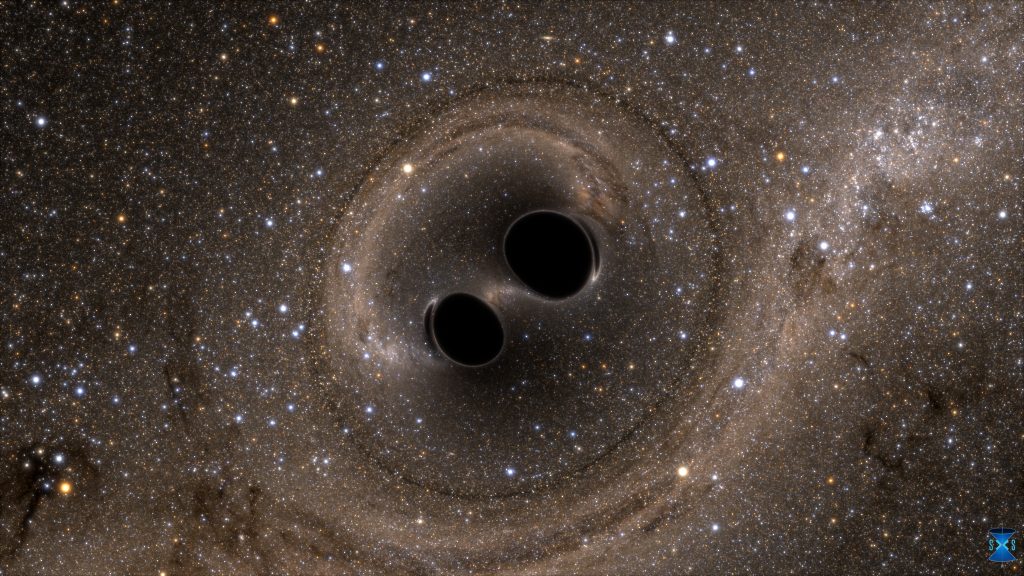
On the 11th of February 2016, the Virgo and LIGO collaboration announced the first detection of a gravitational wave. It has been produced by a system of two black holes and detected from Earth by the American detectors on the 14th of September 2015.
Gravitational waves are emitted when two black holes spirals down to each other. They eventually merge into a final and bigger black hole. Much energy is dissipated through gravitational waves during this process. The two LIGO interferometers detected this signal originated from this cataclysmic event. This first detection is historic for 3 reasons:
- A gravitational-wave event has been detected from Earth for the first time.
- A binary system of two black holes has been observed for the first time.
- The two black holes are very massive (about 30 times the solar mass).


The signal was detected by the LIGO detectors while Virgo was not online. However the Virgo physicists got involved in this discovery. In particular the LAL group contributed to many aspects connected to this detection:
- From the beginning, the LAL group is involved in the LIGO-Virgo burst group, searching for transient gravitational waves. The signal was first detected by a burst search algorithm (Publication).
- An important validation work has been accomplished to exclude an instrumental origin. Over the years, the LAL group has developed expertize on this matter. Many methods and tools of noise investigation, developed by the group, have been used to validate the detection (Publication).
- Fabien Cavalier was a member of the detection committee, in charge of vetting every aspects of this first detection.
- The LAL group contributed to the review of the two analyses used to estimate the event significance (Publication)















